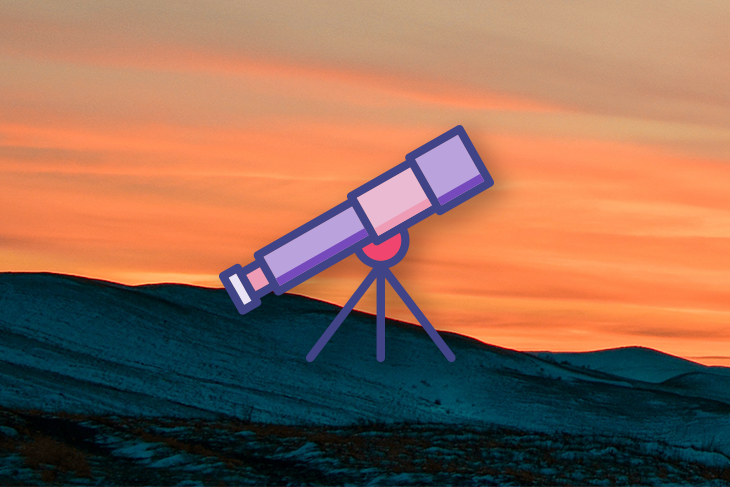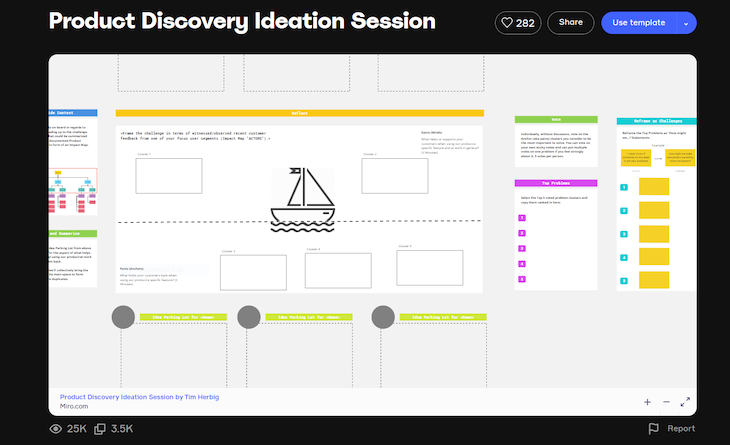Have you ever built a product that received negative feedback? Or built a feature no one ended up using? Maybe you built something that people used for a while but quickly tired of.

These scenarios are commonly associated with a lack of proper product discovery.
In this guide, we’ll discuss everything you need to know to minimize the risk of spending valuable development resources on products that your customers will never use.
Building features and products is a costly process. However, many product teams commit to their assumptions about user needs, spend untold resources based on those assumptions, and later discover that their shiny new features add no value.
This is where product discovery comes in.
Product discovery is a customer-centric process that helps product teams understand their users’ needs so they can build products or features that add value.
Product discovery should be the very first stage of the product development cycle. It’s the decision-making process the product team should follow to decide what to build and define the solution’s scope.
Through various tools and techniques, product discovery enables companies to validate their product assumptions accurately.
Product discovery as a concept has been around since the creation of the first software.
However, product discovery as a systematic process was coined by Marty Cagan with the release of the first edition of his book, Inspired: How to Create Tech Products Customers Love, in 2007.
Inspired covers the base process of product discovery, which involves creating assumptions, validating them, deciding, and repeating the process to always be in touch with your customers.
The product discovery process encompasses a variety of techniques each designed to help you understand your customers’ needs and decide what to implement. These activities help the product team to validate their assumptions and prioritize accordingly, minimizing the risk of failure.
The product discovery process includes techniques such as:
You’ve been using product discovery techniques all along without knowing that you were performing a product discovery process.
The sheer number of product discovery activities can distract some product teams from the main objective, which is to help you decide what to build.
More specifically, product discovery helps you answer the following questions:
When deciding which techniques to use as part of your product discovery process, ask yourself, “Can this help answer my questions?” Other criteria to consider include your user persona, business model, and your organizational environment.
For example, some companies don’t support or fund user research labs, so you might not be able to conduct usability tests. If that’s the case, you should select another method that can provide you with the answers you need to make your decision and to fulfill your objective.
Product discovery helps product teams find data and information that allows them to work on solving problems and building features that really matter to their users.
Among the many benefits of these activities, product discovery enables you to:
Are you building a brand new product for the market? Or are you outreaching your competitors and launching a big innovative feature? Either way, your first order of business is to identify the product-market fit.
Product-market fit is achieved when you can answer the following questions:
Product discovery activities can help you answer these questions and more. For example, you can conduct customer interviews to solicit qualitative data about customer problems. Or, you could build an MVP and perform some usability and user tests to gather feedback and validate whether you are solving a real problem through an efficient solution.
By uncovering the real customer needs through product discovery, you can avoid unnecessary investments and build only what is needed.
For example, you can use product analytics software to identify which features your customers aren’t using and facilitate a discovery workshop to dig deeper into the problem with your product team. You might also perform some customer interviews to understand the users’ concerns around those features.
These insights will guide your decision when it comes to what to build and what to not.
We all make assumptions — that goes for stakeholders and product teams alike.
Assumptions are crucial when it comes to product decisions. You might form assumptions about user behavior, the problem they face, or perhaps the likelihood your customers will use your product more if you build a certain feature.
Product discovery helps you navigate through this messy web of assumptions by giving you a framework by which to prioritize and validate your hypotheses.
For example, you could start by building an opportunity-solution tree to organize your opportunities and visualize them for the product team. Next, assign each opportunity multiple solutions and some validation methods. Based on those results, you should build only what is validated.
Product discovery is all about combining myriad techniques and methods to reach a common ground with the user. This insight should factor into your decisions around where the investment should go.
Many product teams turn into feature factory teams. That’s because most companies treat product managers as project managers and product teams as project teams — in other words, they expect output without considering the outcome.
This leads product teams to build whatever feature they assume will add value. However, if a product team skips the product discovery and turns into a feature team, you risk the following:
Product discovery doesn’t have a universal process. Rather, it’s a mindset combined with a set of activities and techniques to aid your product decision-making.
So, where do you start? There are two templates I would recommend to help you begin your product discovery journey:
This template by Tim Herbig is focused on helping you ideate as many solutions for selected problems as possible, groom the ideas, and prepare them for validation:


Developed by Monika Konarzewska, this workbook takes you from the idea generation stage to developing and validating ideas. The template contains the most commonly used product discovery techniques and stages:

Product discovery is essential for any product team to produce outcomes and to move success metrics.
Product discovery will not only save you costs, but it will help you and your team move to the right strategic direction.
The good news is you’re not limited: product discovery encompasses more than a dozen techniques and processes that will help answer whatever questions you have about your customers’ needs. So pick what you are comfortable with, and start experimenting with your team.
Featured image source: IconScout

LogRocket identifies friction points in the user experience so you can make informed decisions about product and design changes that must happen to hit your goals.
With LogRocket, you can understand the scope of the issues affecting your product and prioritize the changes that need to be made. LogRocket simplifies workflows by allowing Engineering, Product, UX, and Design teams to work from the same data as you, eliminating any confusion about what needs to be done.
Get your teams on the same page — try LogRocket today.

Most teams fail at autonomy. Learn how clear rules help product teams move faster without micromanagement.

A practical framework for PMs to use AI in ideation without sacrificing judgment, strategy, or decision quality.

A practical five minute revenue estimation method to help product managers compare ideas, drop low impact features, and prioritize smarter.

A practical guide for PMs who want to stop being bottlenecks, delegate smarter, and lead teams effectively with a clear ownership framework.